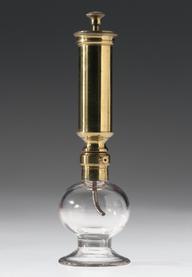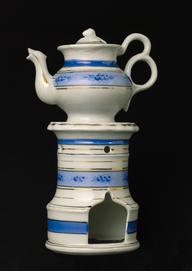

Breast reliever, London, England, 1870-1901

Glass and rubber breast reliever, by S. Maw Son and Thompson, London, 1870-1901
A mother who had trouble naturally breastfeeding her baby removed her milk using a breast reliever. They were also used by mothers to feed their child when breastfeeding was difficult, such as a long journey. This reliever is made of glass and rubber. It used a siphon to draw off the milk. The milk was then fed to the baby via a bottle. The reliever was made by S. Maw Son & Thompson of London.
Doctors advised breastfeeding was best for infants. It should be done by the mother if possible, or a wet nurse of ‘good moral character’. However, many babies of the period were fed less healthy things. These included unboiled cow's milk, sugar water, or ‘pap’. Pap was a mixture of bread or flour, milk and sugar from pap boats. Dried milk and condensed milk were introduced in the 1860s. However, doctors claimed they caused diarrhoea, indigestion and rickets in babies.
Details
- Category:
- Nursing & Hospital Furnishings
- Collection:
- Sir Henry Wellcome's Museum Collection
- Object Number:
- A606850
- Measurements:
-
overall: 90 mm x 150 mm 61 mm, .16kg
- type:
- breast reliever
- credit:
- Steven's




